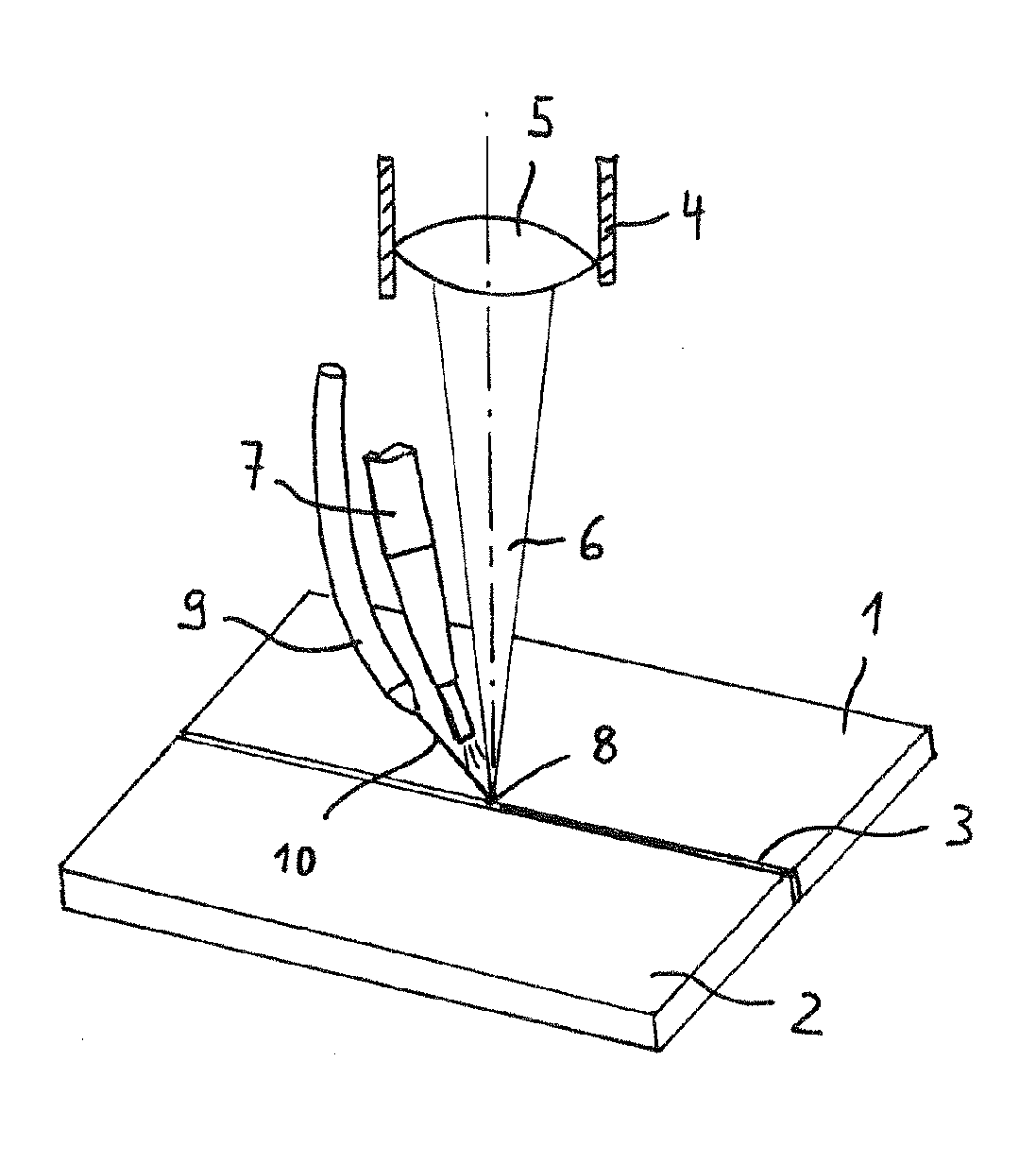Method for laser welding one or more workpieces of hardenable steel in a butt joint
a technology of hardenable steel and laser welding, which is applied in the direction of laser beam welding apparatus, welding/soldering/cutting articles, laser beam welding media, etc., can solve the problems of laser weld seam failure, excess of additional reinforcing parts on the bodywork, and insufficient hardening of laser weld seams, etc., to achieve the effect of preventing failur
- Summary
- Abstract
- Description
- Claims
- Application Information
AI Technical Summary
Benefits of technology
Problems solved by technology
Method used
Image
Examples
Embodiment Construction
[0025]A device is schematically illustrated in FIG. 1, using which a laser welding method according to the invention can be carried out. The device comprises a support (not shown), on which two strips or blanks 1, 2 made from steel of different material quality abut bluntly along the joint 3. For example, the one workpiece 1 or 2 has a relatively weak deep-drawing grade, whilst the other workpiece 2 or 1 consists of higher strength sheet steel. At least one of the workpieces 1, 2 is produced from press hardenable steel, for example made from manganese-boron steel.
[0026]The workpieces 1, 2 are essentially of equal thickness. The thickness thereof is at least 1.8 mm, for example at least 2.0 mm.
[0027]Sketched above the workpieces 1, 2 is a section of a laser welding head 4, which is provided with an optical system (not shown) for supplying a laser beam and also a focussing lens 5 for the laser beam 6. Furthermore, a pipe 7 for supplying protective gas is arranged on the laser welding ...
PUM
| Property | Measurement | Unit |
|---|---|---|
| thickness | aaaaa | aaaaa |
| thickness | aaaaa | aaaaa |
| temperature | aaaaa | aaaaa |
Abstract
Description
Claims
Application Information
 Login to View More
Login to View More - R&D
- Intellectual Property
- Life Sciences
- Materials
- Tech Scout
- Unparalleled Data Quality
- Higher Quality Content
- 60% Fewer Hallucinations
Browse by: Latest US Patents, China's latest patents, Technical Efficacy Thesaurus, Application Domain, Technology Topic, Popular Technical Reports.
© 2025 PatSnap. All rights reserved.Legal|Privacy policy|Modern Slavery Act Transparency Statement|Sitemap|About US| Contact US: help@patsnap.com


